This was published 5 months ago
‘I’m still an outsider’: A path from a childhood in denial to lighting up the CBD
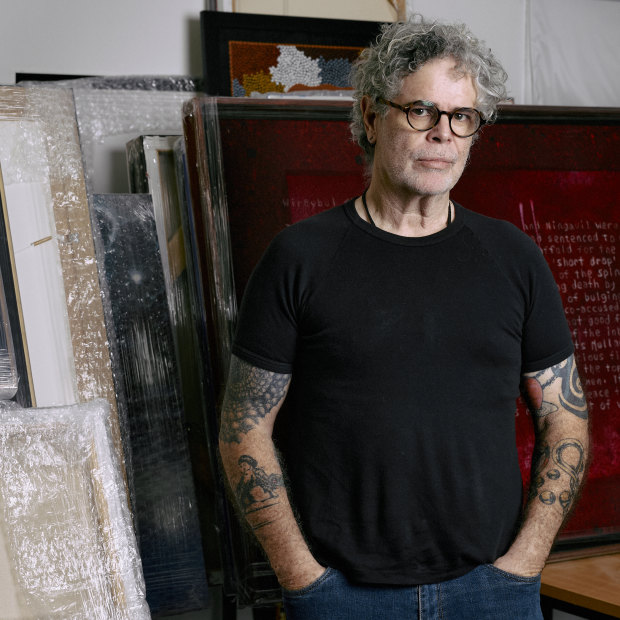
Brisbane-based Indigenous artist Birrunga Wiradyuri.Credit: Markus Ravik
A trail of smoke winds across the luxury storefronts outside QueensPlaza in Queen Street Mall.
The Dior sign is swallowed first, then Burberry. A small grey-haired woman in a houndstooth suit moves towards the crowd, bathing each person in the smouldering flames.
When she reaches Birrunga Wiradyuri, he lets the smoke engulf him, twirling on the spot and emerging like an apparition.
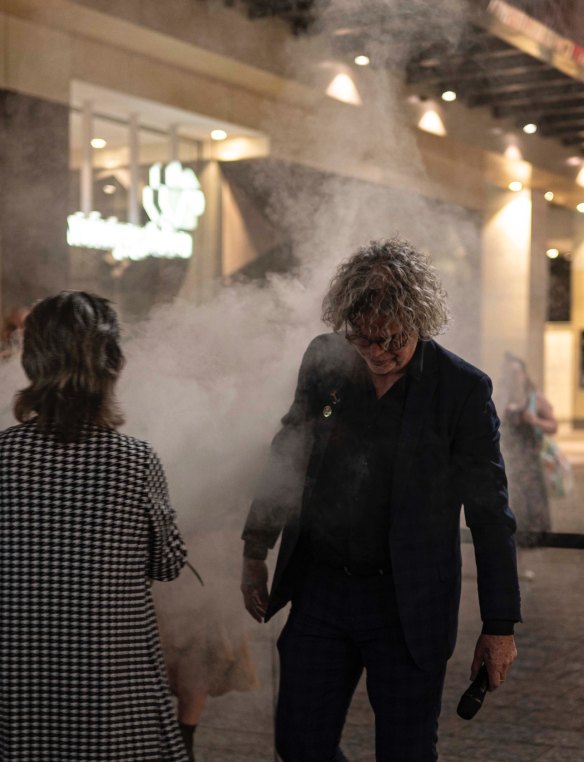
Birrunga Wiradyuri and Aunt Kathryn Fisher at the smoking ceremony for the QueensPlaza installation. Aunt Kathryn was born and raised in Cherbourg, and now lives in Brisbane.Credit: Birrunga Gallery
After the smoking ceremony, the crowd is still as the low echo of a didgeridoo breaks the quiet. The David Jones sign lights up and for the next eight minutes, all eyes are locked on the moving illumination surrounding it. Each colourful design is based on a work held by Birrunga’s gallery.
“These are reimagined artworks that tell cultural stories,” Birrunga explains later.
“Having an arena like QueensPlaza is an amazing opportunity to present First Nations visual narratives, and continue to make opportunities available.”
Meanjin is not Birrunga’s country – “I have no cultural authority here,” he says – but it has been the artist’s home for the last 30 years.
In 2019, Indigenous art space Birrunga Gallery opened on the lower level of a commercial building on Adelaide Street, in the heart of the CBD.
Through a mentoring program, he brought young First Nations artists into the city, giving them esteem where they had historically been pushed to the fringes.
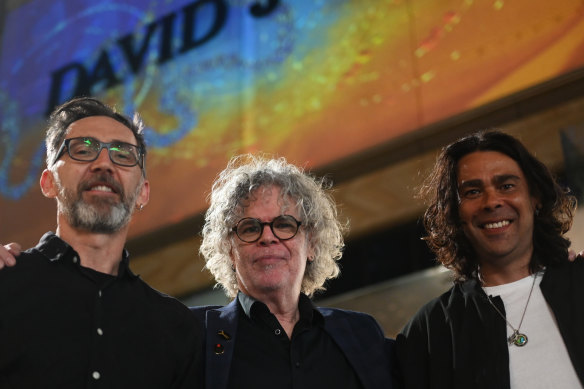
Studio ESEM founder Michael Killalea (left) and artist and musician Ben Barker (right) with Birrunga at the QueensPlaza illumination’s launch.Credit: Birrunga Gallery
In April, he decided to close the gallery and move operations online. The CBD, Birrunga says, has changed, and it’s time for him to change too.
Recent projects – the QueensPlaza installation, a commission for Cross River Rail, workshops during Indigenous Business Month and a residence at The Shed in Northshore – have validated the move.
Besides, there’s a sense that Birrunga works best when the rug’s been pulled out from under him.
“The more unstable, the better it is for me.”
Birrunga sits inside a demountable building surrounded by paintings, half finished works and canvases. Sketches and words are scribbled on the walls. The carpet – worn and fraying – is covered in flecks of paint. It’s messy and chaotic, but that’s the world he was raised in.
Born in 1963 on Wangal and Gadigal country, in the inner-western Sydney suburb of Lilyfield, his family moved to Buderim the year he turned three.
Life on the Sunshine Coast hinterland was idyllic on the outside, but vastly different in reality.
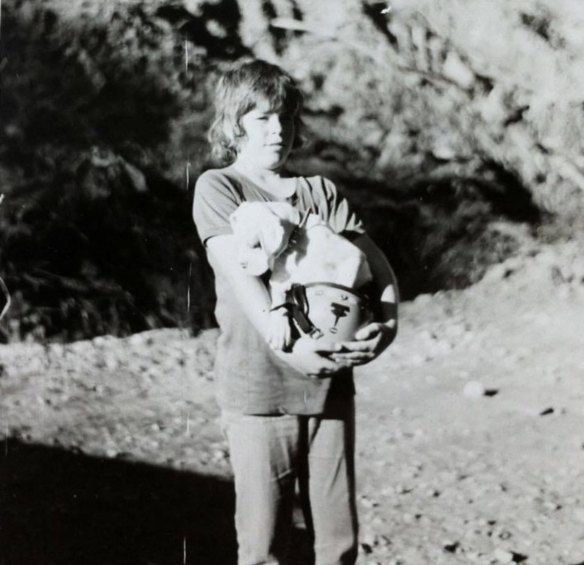
Birrunga, aged 10. Credit: Birrunga Wiradyuri
“I was born into domestic violence,” Birrunga says. “Both my parents were abusive towards me and each other ... it was pretty much from day one. Anything you can think of and a few you probably can’t.
“In primary school, because I was being brutalised daily, I didn’t have any real fear of any other adults ... the mechanisms that were meant to work for children to be obedient, didn’t work on me.”
Two crucial things happened when Birrunga was about six. His father sat him down for a sex talk, and to tell him that they were Blakfellas.
“[The Indigenous side] came through my grandfather, Charlie. He was obviously a Blakfella. But if you ever said it to him, he’d punch you in the face.
“It was the two generations before me that were so profoundly impacted by the stolen generation and kids being taken. If you could, [you would] admit to being anything – Portuguese, Maori, Spanish, Indian, whatever – anything but being a Blakfella because that just precluded opportunity.”
After his father’s “great oration” he remembers being told: “So now you know we’re Blakfellas but if you ever tell anyone, I’ll kill you.”
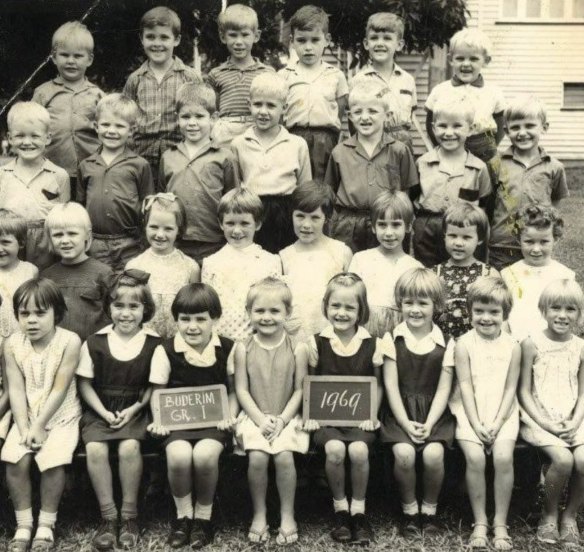
Birrunga (third row, third from the left) in grade one at Buderim Primary School. Credit: Birrunga Wiradyuri
The second significant event was winning a self-portrait competition in grade one. His prize was a dollar.
“My parents said, ‘Where did you get that?’ And I told them, and they said, ‘No you didn’t. You stole it,’” he recalls.
“Things just went south from there.”
The episode triggered a long period of self-denialism. Birrunga buried the parts of himself that were connected to his culture and art, leaning instead into the violence that surrounded him.
“It all set me up to be on the outside ... I still am very much an outsider.”
Birrunga speaks openly about his trauma and the ways it shaped him. He describes himself as an angry and violent young man, a result of his childhood and two acquired brain injuries: one from contracting encephalitis and the other from being hit by a car. For years, he struggled with alcoholism and addiction. Stability was not in his vocabulary.
Trauma no longer defines him, but it’s still part of his identity. “It’s not to be underestimated that dysfunction can be really useful. It shows you how to do things, sometimes,” he says.
Art and culture have been crucial to his healing continuum. It was his ancestors, he says, who helped him rediscover art when the time was right.
“My ancestors were keeping me away from it because I could never have handled the responsibility or the attention then. They were wise in making that opportunity wait.”
His close friend, ex-Boggo Road prisoner, artist and advocate Wayne Weaver, was another instrumental figure. The pair met while working for Brisbane Youth Service, and when Birrunga eventually picked up a paintbrush some years later, he showed Wayne the finished piece.
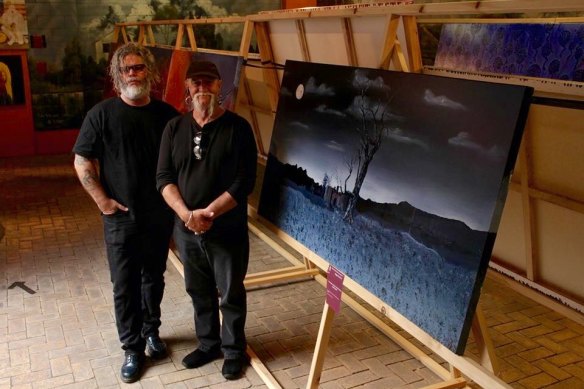
Birrunga with his friend and fellow artist Wayne Weaver.Credit: Birrunga Gallery
“He said, ‘Alright, keep going.’”
In 2015, Birrunga returned to Bathurst – on his father and grandfather’s country, Wiradyuri nation – to meet his elders. “That was the beginning of my homecoming,” he says.
Four years later, he completed a naming ceremony, shedding his colonial name, and taking his great-grandfather’s – Birrunga.
“Taking counsel from [senior lore people] has meant that I understand the priorities of culture. And if I don’t, I will ask.”
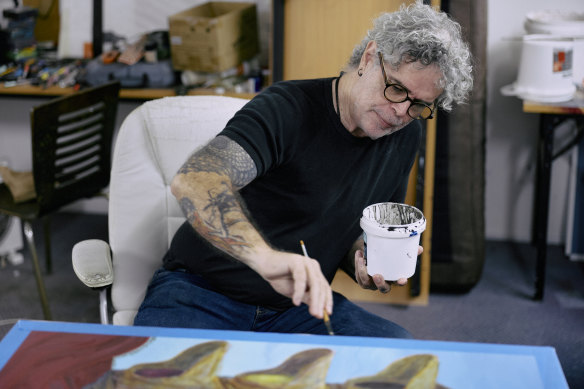
Where Birrunga leans now is art and creating opportunities for Indigenous communities. Credit: Markus Ravik
Two works solidified Birrunga’s decision to stay the course with art. One was Bilabang Bulubunirra, a painting of the night sky over Bathurst. A friend asked if a Swedish astrophysicist could take a look.
“My permission was contingent that all she sent was the photo with the words: night sky, naked eye, central New South Wales 1823-27 ... that’s around the declaration of martial law and the Frontier Wars.
“What came back was that geographically and chronologically, looking at the night sky through the naked eye, [I had painted] the Milky Way – which I couldn’t paint to save myself. That was a big thing for me. I no longer had the ability to doubt what I was doing.”
The other was a portrait of Archie Roach, an entry for the 2014 Archibald Prize, which the musician sat for in Brisbane.
“When he saw what I had done, he said, ‘A lot of people have painted me, but they always go for what I look like. This is the first time anybody’s ever got who I am.’ I learnt so much from that relationship.”
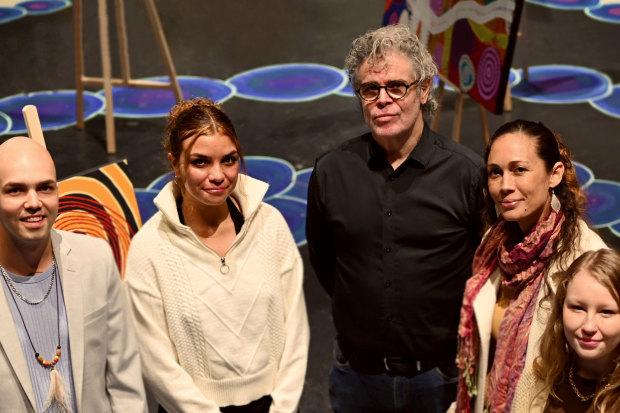
Birrunga with artists from the Cultural Creative Development Program. Left to right: Kane Brunjes, Tiesha Martin King, Jessica Skeen and Jemma Stewart. Credit: Birrunga Gallery
Birrunga is still learning. His approach – to doing business and taking space as an Indigenous artist and leader – hasn’t always been popular. But he has lost the reactivity of his younger years, and knows how to meet opposition with patience.
“I’m still a f---ing lunatic with an awful lot to work through, but I’m a much more high-functioning one with more self-awareness and understanding,” he says.
“My cultural practices don’t fit the stereotypical proposition of what a blackfella should be doing. I behave and model self-determination. And often when you’re doing that, you’re breaking new ground and ruffling feathers.
“But you’ve got to break a few eggs to make omelettes.”